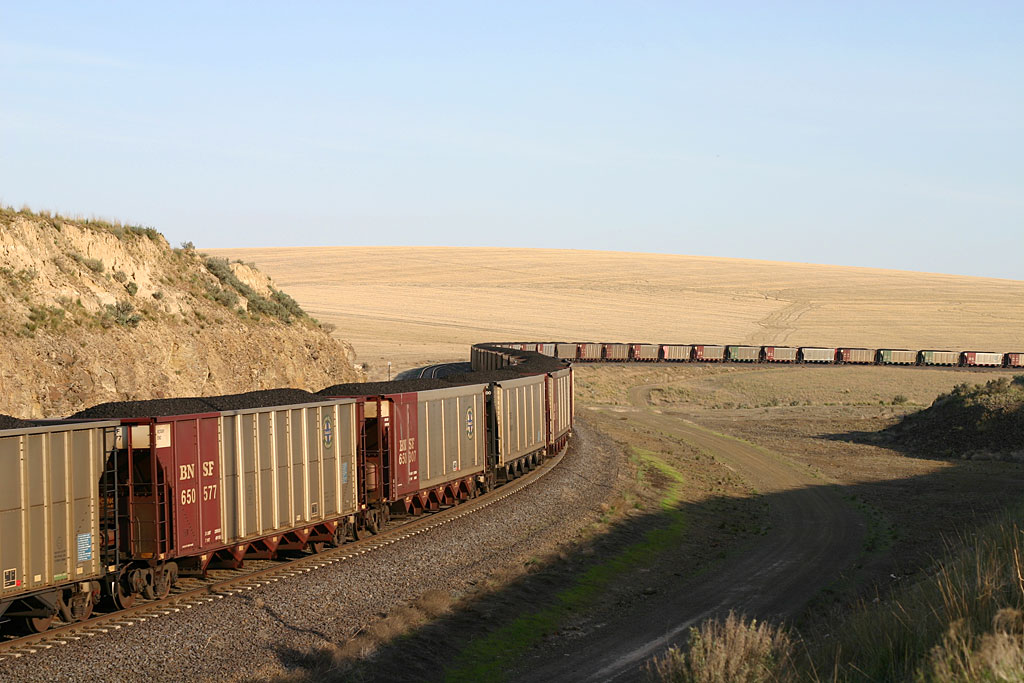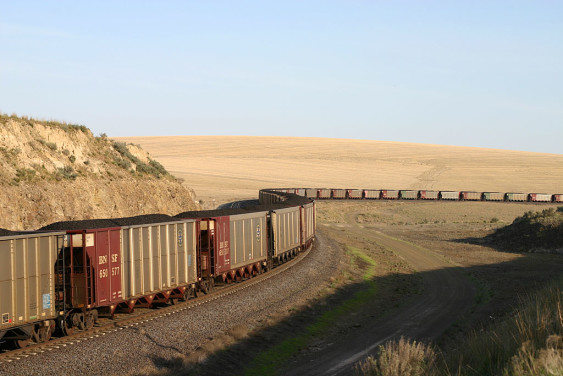A new railroad proposed in Montana offers a sneak preview of what’s to come for the Northwest coal export debate. The news is troubling.
The little-known Tongue River Railroad project would, if approved, build a new line through eastern Montana’s rangeland to allow development of a new export mine for Arch Coal. It has big implications for the proposed coal terminals in Washington: without the railroad and the mine it would support, the already troubled Millennium Bulk Terminals project at Longview may die. On the other hand, an industry-friendly permit review that ignores basic facts and blithely waves away objections would tip the scales in favor of coal.
And that’s exactly what we seem to be seeing in the recent draft analysis of the Tongue River Railroad.
In formal comments, Sightline Institute’s Clark Williams-Derry digs into a key aspect of the Draft Environmental Impact Statement, the “market analysis section,” and demonstrates that it is preposterously and fundamentally flawed. The analysis is riddled with basic factual errors and with selective and biased readings of the available evidence. The authors cherry-pick data, fail to disclose their methodology for inspection, and reach conclusions that are demonstrably false. Moreover, statements in the review strongly suggest that the conclusions are based on circular reasoning, with key conclusions built into the assumptions themselves.
More troubling, the Tongue River Railroad analysis was prepared by the same firm, ICF International, that will be doing reviews for the Longview and Cherry Point coal terminal proposals in Washington.
Sightline believes that the coal market analysis should be abandoned in its entirety. It should be replaced with a more transparent model that reaches realistic conclusions recognizing that the Asian coal price bubble has thoroughly deflated.
See Sightline Institute’s official comments on the Tongue River Railroad DEIS.
For more on the dismal financial prospects of coal, see the Sightline series Coal Exports: Caveat Investor.











jayme b miller
Say what? You make an arguement without any facts. Common sense is coal takes the shortest route to market to keep shipping costs low. This coal will end up going east because it is almost 300 miles shorter than what comes out of decker. That’s also a complete day quicker turnaround. Cloud Peak is the big owner of the proper port and there ming in decker is expanding to meet the port marker. Might also mention the TRR follows a county road easement, so its not going through a vast undisturbed range land as you like to make people think